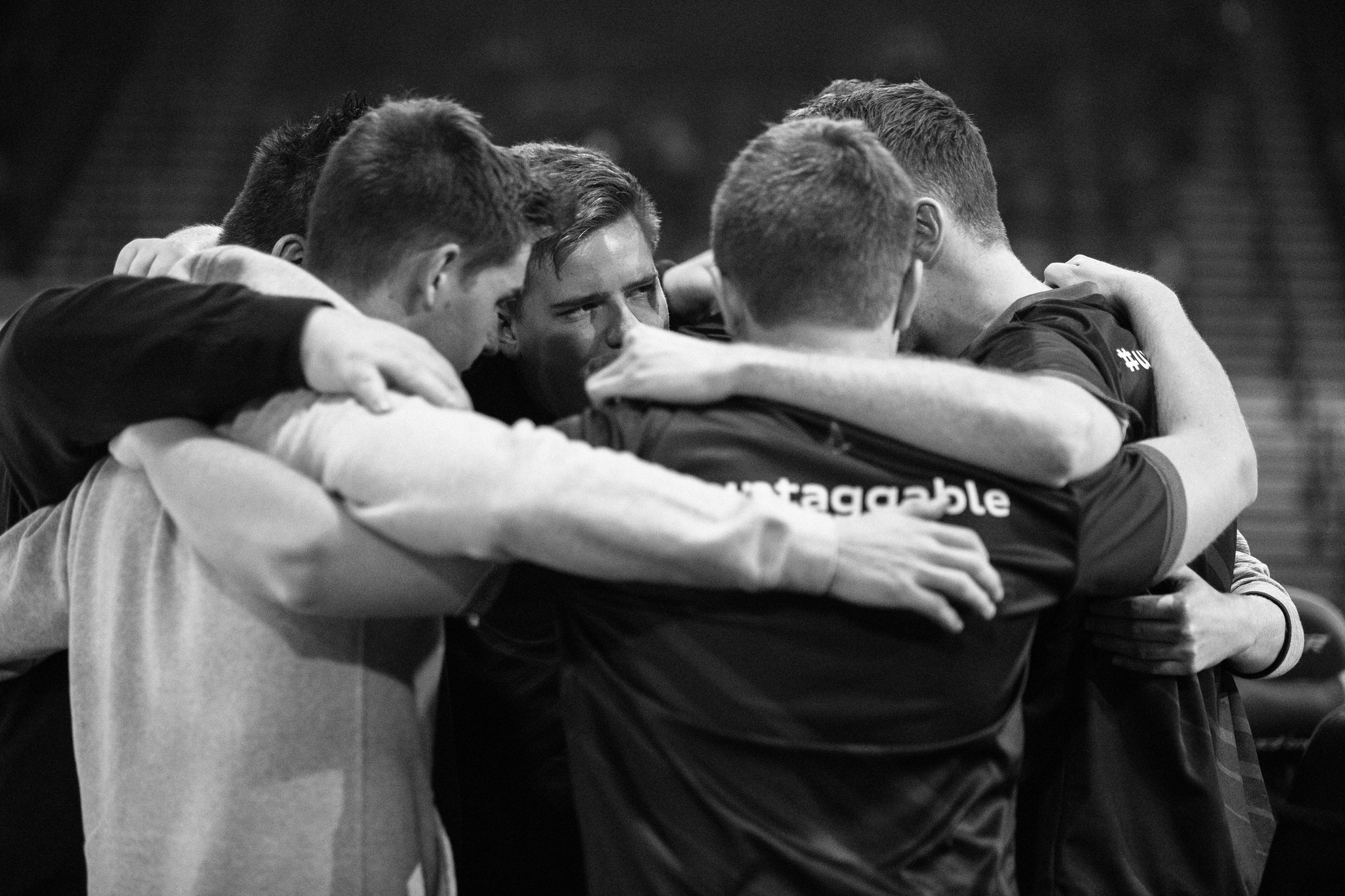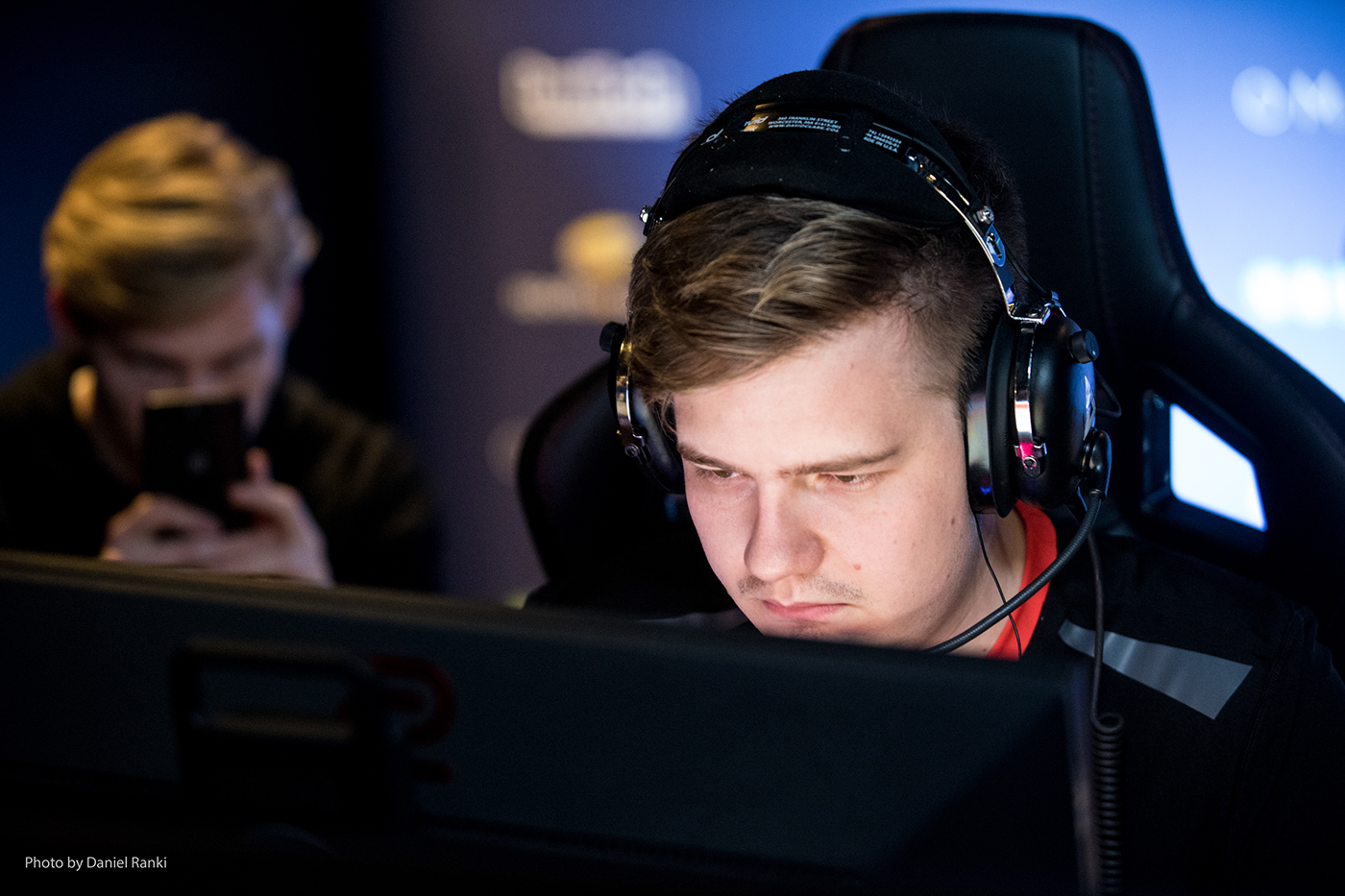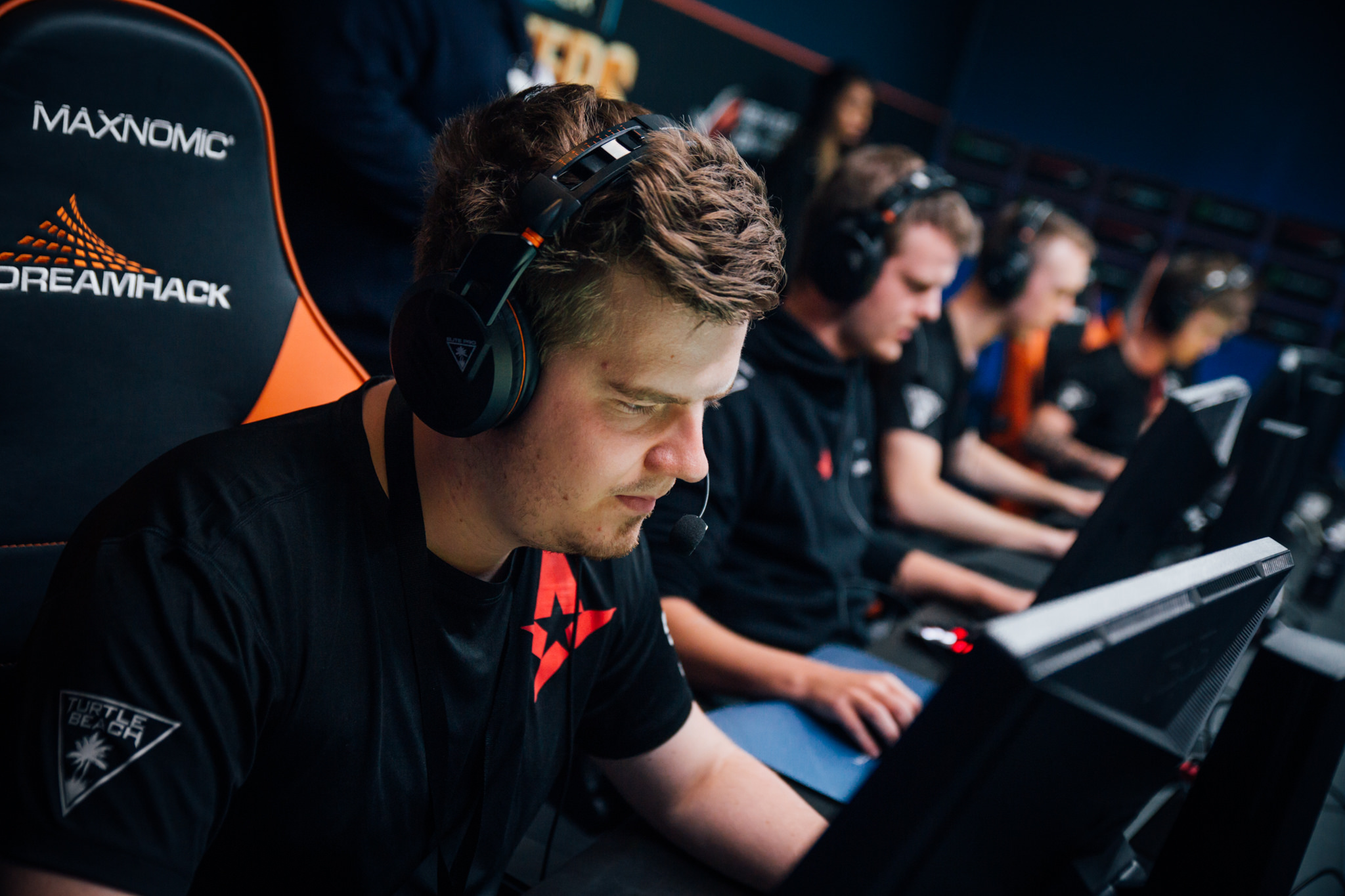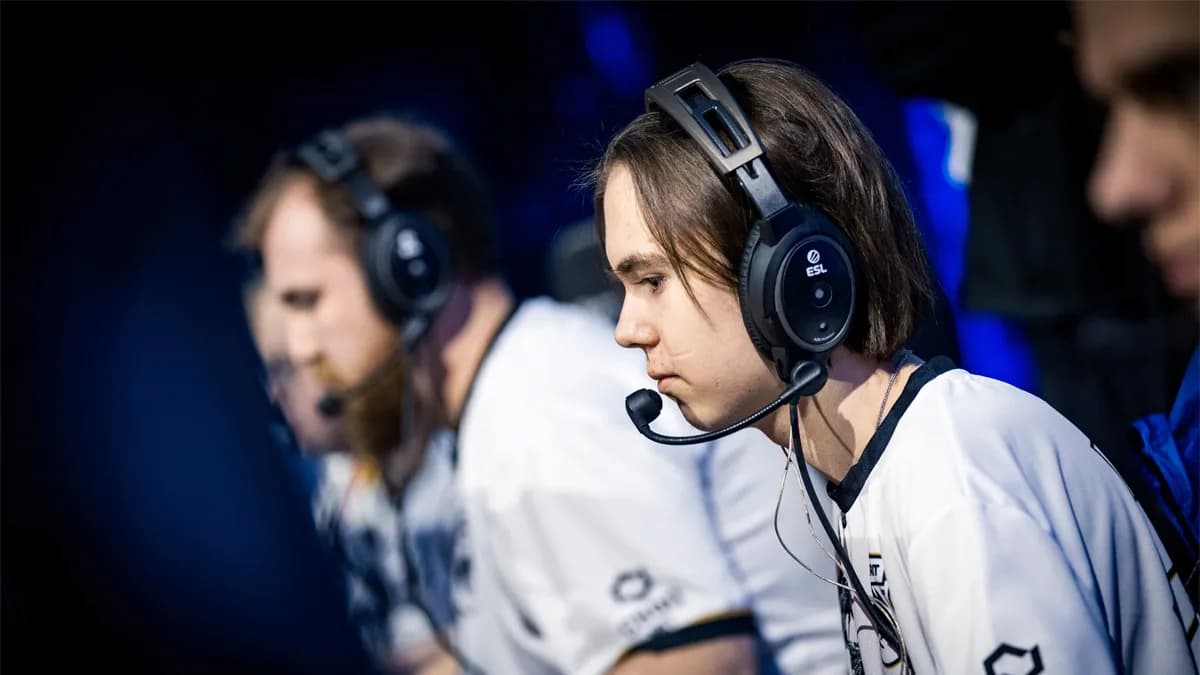Peter “dupreeh” Rothmann’s heroics in the Blast Pro Series final again reminded the world that this Dane is one of Counter-Strike history’s great players. Astralis, his team, faced a seemingly impossible task at the event, going against five of the top seven teams in the world and with device, their star player and crucially their primary AWPer, out of commission due to illness shortly before the event, leaving the Danish powerhouse to find both a replacement and reshape their squad. That they both reached the final and then championship point against what is now considered the best team in the world (SK Gaming) speaks to the ability present within dupreeh.
Fans who have only been following Counter-Strike since the middle of 2016 may be unaware that dupreeh has not merely elevated his performance over the last half of 2017, but begun his return to the standard of excellence he had established over his first three years in the game. Certainly, he was never in contention for the title of best player in the world, but he always a legitimate contender for top 10 status and a clear strength in teams which showed themselves to be consistently elite and eventually broke through to become champions. But for the existence of team-mate, and frequent partner-in-crime as the other half of the “Double D’s”, device, dupreeh would be known as Denmark’s greatest ever CS:GO player.
Your ass used to be beautiful
When Danish CS:GO began its gradual but ever-increasing rise in early 2013 it was a tale of two Wolves: Copenhagen and Western. Dupreeh’s Copenhagen Wolves, under the leadership of Source veteran FeTiSh, was slower to get rolling and so it was initially the Western Wolves of gla1ve and pimp that made the elite grade. As the year went on Copenhagen Wolves would piece together placings and upsets to finish the year as a team on the brink of becoming a champion. Dupreeh’s play was vital to that ascension. Over the first part of his tenure in the team, one could have even made the case he was its best player and superior to device, who was actually kicked early on and in-and-out of the line-up over that year.
By 2014 got going it was clear that Dignitas, as the team was now known, was one of the best teams in the world, albeit a rare example of a team good enough to beat all the squads below them but seemingly destined to always be thwarted by the top 2-3 teams in the big semi-finals, thus spawning the famous but nevertheless accurate narrative of this core choking in the semi-finals. The driving forces of the team were the aforementioned combination of device and dupreeh. Device was an all-around talent, show-casing his abilities across all weapons and establishing himself as a hybrid AWPer. Dupreeh played arguably the hardest role in the team, though, as its entry-fragger and yet stood out as a star.
Dignitas’ tournament path of reaching big semi-finals and losing highlighted a strength and weakness, having the consistency and ability to put themselves in contention for a title but then failing to deliver upon that. Likewise, their team’s style show-cased a similar strength which highlighted a weakness. Dignitas were one of the best CT side teams in the world, able to put double digit rounds on the defensive side routinely and before FNATIC took that strength and pushed it further to climb to the top of the mountain and warp the meta-game late in 2014. Unlike that Swedish core, Dignitas didn’t take their monster CT halves and then convert them into as many wins and thus titles, instead famously struggling to put T side rounds on the board, in the context of their peers.
Despite Dignitas’ struggles, dupreeh was known and rightly praised as one of the best entry-fraggers in all of Counter-Strike. The few T rounds his team did put on the board came in large part thanks to him and his phenomenal AK bursts opening up a hole through which his team-mates could pour. During this time dupreeh was close to a hard entry, yet his skill-set did not see him having to brute-force the game, able to pick his timings on when to push and which duels to take.
The arrival of karrigan took a little pressure from dupreeh, as the current FaZe in-game leader was able to quickly make use of the talent in Dignitas to emphasise their strengths and thus show the world that this was one of the most skilled line-ups in the game. Along with the double d combo (device and dupreeh), the talents of cajunb shone brighter than ever as a secondary AWPer and strong rifle player. During this time span, just over a year from the beginning of 2015, dupreeh was always a part of the entry pack, but less often had to be the guy punching through the brick wall first in all cases. Surrounded by talent and in a fully functioning championship team, dupreeh was able to display more of his aptitude for clutching, most famously hitting a spree of form in this regard in the Autumn of 2015 when he would seemingly close out the majority of late-round situations put before him.
Genuine star power
Entry-fraggers are rarely if ever going to light up the scoreboard with the same level of consistency of more passive or late-round players like 2013 GeT_RiGhT and shox or current day coldzera and device. That is a primary reason why the play of fer has been such a revelation in 2017, with the absurdly aggressive Brazilian able to both play intensely aggressively and yet still find himself in discussions for MVP of tournaments. During the first portion of his career (2013-2015) dupreeh was able to put up consistent numbers, but it would be his occasional outbursts, taking over a whole game or series, which marked his greatness. Much as apEX is often credited as an X factor for his teams when he strings together a big series, dupreeh has a portfolio of super-star level series over the years.
A key moment in Dignitas’ rise came at Gfinity G3, the tournament prior to ESL One Cologne 2014, where they finally broke through against NiP, their long-time nemeses and the side who had so often denied them finals appearances. Dupreeh’s 43:22 (+21) series put f0rest and GeT_RiGhT in the ground, a most unfamiliar experience for what was then the game’s most dominant and intimidating duo. At the major which followed, shox took an under-powered Epsilon to the play-offs and hoped to spark a Cinderella run. Dupreeh’s 50:28 (+22) shut-down ended that fairy tale before the pumpkin carriage could even get rolling down the lane.
Karrigan’s arrival finally spurred Dignitas, who were to become TSM shortly after, to break through against the big sides late in tournaments. An early example came in the third place decider at MLG X Games Aspen, in January of 2015. With FNATIC having been beaten in a certified classic against NiP in the semi-finals and Dignitas having fallen to Happy’s LDLC, the two would play a final series against each other. Dupreeh’s 51:32 (+19) theatrics ensured the world knew this Dignitas were capable of beating that FNATIC core, a feat they would repeat again and again in the coming months, finally putting trophies in their long empty cabinet.
In circumstances which seem uncannily familiar, in light of the Blast Pro Series campaign of Astralis, TSM had to attend the EPL Winter event in April of 2015 without star player device, with cadiaN standing in for him. At the tournament they would defeat Virtus.pro, a key rival of theirs and one of the game’s elite sides, in the group stage thanks to a god-like 71:51 (+20) three map series from our man dupreeh. Likewise, at FACEIT Stage 2 Finals later in the year, TSM met Na`Vi in the semi-finals, with GuardiaN in blazing form, but dupreeh’s 63:38 (+25) stomp session putting his team into the final.
Finally, even with 2016 spelling a dip in form for dupreeh and his team spiralling down into eventual irrelevance, there was the shining perfect moment of the major quarter-final at MLG Columbus. FNATIC came in as heavy favourites to win the title, on a streak of having won their first six straight offline events. Many will know that olofmeister’s injury reared its ugly head at this point and prevented the world’s best player from displaying his skills at this tournament, just as they will likely remember the infamous “karrigan time-out”, where the Astralis leader ensured FNATIC had to stew in their inevitable defeat right before the killing blow, but it seems many have forgotten it was dupreeh who was the star of this series. His 52:27 (+25) performance against the world’s best team rang out through the Nationwide Arena and made certain a new champion would be crowned at that event.
Growing pains
2016 saw dupreeh’s form waver until he had become just another good pro, but far from a star. Astralis had been a team famous for their ability to reach the play-offs of tournaments seemingly every time, with their troubles only starting later, but two straight group stage eliminations sent a message that change was needed. The addition of Kjaerbye didn’t seem to alter their fortunes much and questions began to be asked about whether dupreeh, along with in-game leader karrigan, was a player who needed to be pushed out to make room for a new team identity and composition of stars.
Remaining with the team, dupreeh’s efforts seemed even less effective when new in-game leader gla1ve joined and took over the reigns. The former Heroic man called upon dupreeh to sacrifice his role, giving Kjaerbye the entry position and putting dupreeh in more of a lurking role. After numerous years of excellence as an entry, it had to have been humbling for dupreeh to be asked to give up that responsibility and learn a new one. In a team which was back to a world class level, and thus reaching at least the semi-finals of every event, dupreeh faced a steep learning curve. What’s more, Kjaerbye, his replacement, was looking more like the old dupreeh and playing a pivotal role in Astralis’ climb to the number one rank and the titles which followed.

What goes up must come down and Kjaerbye began to level off as Astralis also finally stopped winning titles, the correlation between entry-fraggers struggling and strong tactical teams finding less big wins a fairly obvious one to draw conclusions from. In this moment of need, dupreeh would again assert himself as a player. With a solid eight months of experience behind him now at his new role, he was a new player. This dupreeh was not only putting up numbers again, but doing it as an aggressive lurker. Playing on the outskirts of maps, dupreeh would hold positions to ensure Astralis applied pressure across the map. In a team with as deep a play-book and as prone to mid-round reads from their IGL gla1ve, this still allowed dupreeh opportunities to show off his entry abilities of old, with quick mid-round switch-ups letting him apply aggression to his lurks and open sites.
What’s more, the former hard entry could take much of his experience mastering his previous role and apply it to his lurking style, playing as much more of an aggressive lurker than most teams employed. When set as a distraction, his sense of when to push would allow him to constantly be a danger flanking or holding CTs in position. When instead the team rotated him over, such as on maps like mirage, he could again go in with the entry pack, sometimes even playing a tag-team game with Kjaerbye and giving Astralis the luxury of a legitimate double entry threat, with double peeks into positions like the connector on mirage.
This return to form and from a new role has even seen dupreeh again creating memorable series, with his 59:21 (+38) series against the current FNATIC line-up in the ELEAGUE Premier quarter-final deserving a spot along with the classics previously mentioned in his scrap-book.
To master one role can make a player great, but to master two certifies you as a legend.
Blasting off to the stars
The story of Astralis’ run at the Blast Pro Series would fit well in a Hollywood movie. The team came into the event without device, their super-star player and the only AWPer in the team. Thanks to his absence being due to illness they were forced to look for a replacement late, ending up with former FNATIC player dennis, a Swede who did not speak Danish and would need to be communicated to in English. For such a tactical team as Astralis, losing both their best player and primary AWPer put them in a very difficult position, as their system could no longer function or at least as effectively as previously. Being as Astralis had not won a tournament with their main line-up in more than eight months, taking a stand-in to this tournament seemed a sure-fire omen that the Danish side would not be contending for the title, with the best European teams in attendance and the two best teams in the world, FaZe and SK Gaming, both gunning for the top spot in their own two-team rivalry.
Gla1ve would again call upon dupreeh to give up his role and learn a new one. Rather than slot stand-in dennis into device’s roles, dupreeh would take over as the primary AWPer and dennis would take his spots. Dupreeh had been a secondary AWPer for the team in the previous few months, but had rarely ever played that role previously in his career, playing in teams like the TSM core which featured strong hybrids like device and cajunb and even an IGL (karrigan) who would pick up the sniper rifle. Going against the best teams in the world with an AWP in your hands most of the time would be enough to test the mettle of practically anyone.

The group stage saw Astralis go undefeated, with new man dennis putting up huge numbers and dupreeh finishing +21 in Kill to death differential. In the final they would face SK Gaming, the team who had won EPICENTER less than a month prior. Thanks to vetoes being agreed for the event weeks prior to it beginning, Astralis had only played two maps (overpass and inferno) in the group stage. SK, with their wide and deep map pool, were able to create a Bo3 which seemed to further press their advantage, with the maps being mirage, inferno and cache. Both mirage and inferno had been problem child maps for Astralis that Summer, in part contributing to their fall from championship glory and the rise of teams like FaZe and SK, with felps.
Dupreeh’s AWPing on the T side of mirage won the team two big rounds in the first half and pushed Astralis to a one map lead in the series. SK came back on inferno and evened up the series, leading to a deciding third map for the title. Dupreeh and FalleN battled, with the latter cycling up into god-like form, but Astralis were still poised to potentially win, reaching championship point for the final round. Victory in front of the adoring home crowd in Copenhagen would have been beautiful thematically, but video games reward the players who make the right plays, not the ones with the most cheering fans. SK reached over-time and FalleN’s men stole the show from Astralis and dupreeh.
Our choices can define us
An interesting wrinkle in dupreeh’s career arc is that he may well have revived his star power had he indeed been kicked from Astralis at some point in 2016, perhaps instead of cajunb. Where cajunb went over to Dignitas, in a swap with Kjaerbye the other direction, the former TSM hybrid AWPer never embraced a super-star spot on the team, instead again settling in as a reliable and strong role player and the designated AWPer, seeing youngsters magisk and k0nfig emerge as the star talents. Had dupreeh been the man joining Dignitas then I’ve little doubt MSL would have appropriately positioned him to be the squad’s main star and not only would he have likely returned to glory individually, but perhaps Dignitas would have been better poised for success, with the rise and fall of magisk and the development of k0nfig being less primary factors amounting to but also limiting their potential success.
Instead, he remained in Astralis and his sacrifice allowed Kjaerbye the platform on which to shine, his team the versatility to win championships and now has given Astralis a new strength in their already bugling arsenal.
All around the world
Dupreeh’s time playing without device most recently have unveiled a hidden side to what was already a player who had excelled in two different key roles. Likewise, it added another skill to an already stuffed tool-kit as an individual player. Dupreeh had already put in his time as an entry to establish himself as one of the greats and now he can be seen creating a new chapter in his legacy, as a pressure-lurker . Now we discover a player who can AWP within his limits effectively, having never been called upon to exhibit such talents, thanks to playing with device, cajunb and karrigan.
Dupreeh’s style with a rifle has never been about flashy one taps and resets, he has a strong initial burst and then, by virtue of the pressures of his long-time role, follows that up with good spray if he does not secure the kill. Finally, to summon up images of dupreeh’s abilities with a pistol all that is required to recall his desert eagle kills when Astralis’ economy is low. Few players have been as good with the weapon for as long.

Dupreeh is likely never going to be the center-piece of a major winning title at this point in his career, with the chances of accomplishing such a feat wasted away in the Dignitas and TSM days, but Astralis have in him a player of truly historic stature and who has time and time again shown he will find a way to craft an effective playing style which can then be utilised by his in-game leader to deliver deep finishes and perhaps championships. Denmark’s lost star is found again.










Published: Dec 24, 2017 12:55 pm